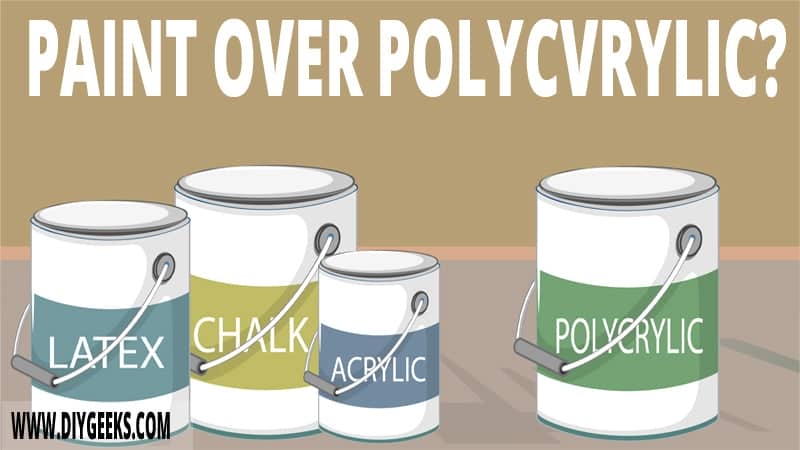Polycrylic is a wood sealer with a water-based formula. You can paint over a polycrylic finish, but you must lightly sand the finish to remove the protective top layer before applying the paint.
Polycrylic must cure (fully dry) before painting or sanding it. If you paint or sand it too soon, the finish will peel off.
You can mix polycrylic with water-based paints as both use a water-based formula and are compatible.
How Long Must Polycrylic Dry Before Painting Over It?
Polycrylic must cure (fully dry) for around 24-48 hours before painting over it. Once polycrylic cures (fully dries), it reaches its maximum durability, strength, and adhesion, and you can sand it.
The exact dry time depends on the humidity levels, room temperature, thickness and number of coats. For instance, the wood sealer dries faster if the room temperature is higher.
Polycrylic has a water-based formula and dries faster than other wood oils as its solvent (water) evaporates fast from the coating.
If you paint over polycrylic or sand it too soon, the finish will peel off as it isn’t strong enough to withstand a new paint coating or sanding.
How To Paint Over Polycrylic?
To paint over polycrylic, do the following things.
- Clean the polycrylic finish with a wet rag.
- Sand the polycrylic finish with fine-grit sandpaper (220-grit). For high-gloss polycrylic, use medium-grit sandpaper (100-grit).
- Remove the dust with a dry fast.
- Apply 2-3 paint coats and seal the finish.
You can’t paint directly over polycrylic without sanding as the wood sealer has a finish that prevents paint adhesion and water (liquid) penetration.
The polycrylic formula consists of simple esters, urethane, and polyacrylates which create a water-resistant coating over a surface.
You must sand off (remove) the polycrylic top coat before applying paint. If you paint directly over the polycrylic, the paint won’t adhere and will peel off.
Sanding removes the polycrylic topcoat, and the surface imperfections, creates tiny pores (holes) in the finish and makes the surface paint-ready.
Can You Apply Water-based Paints Over Polycrylic?
You can apply water-based paints over polycrylic as both have a water-based formula and are compatible. But, the polycrylic finish must cure (fully dry) and you must sand its top coat first before applying the paint.
Every paint type is made up of 4 ingredients; the binder, (to hold paints together), the solvent (to dissolve paint particles), the paint pigments (to give color), and additives (to improve the finish). If the paints have the same solvent and binder they are compatible with each other. Polycrylic and water-based paints have the same solvent and binder.
Since polycrylic and water-based paints have a similar formula, both finishes will expand and constant based on temperature changes in the same way. So, if the polycrylic coating expands, the water-based paints will expand too, preventing a cracking finish.
Can You Apply Oil-based Paints Over Polycrylic?
You can apply oil-based paints over polycrylic, but it’s not recommended to.
Polycrylic has a flexible formula that expands and contracts based on temperature changes, while oil-based paints don’t. If the polycrylic underneath expands or contracts and the oil-based paint doesn’t, the finish will develop cracks.
Can You Mix Polycrylic with Paint?
You can mix polycrylic with water-based paint as both have a water-based formula and are compatible. A mixture of polycrylic and water-based paint will produce a colorful protective finish.
Polycrylic has a transparent protective finish because its formula doesn’t contain paint pigments, water-based paints have a colorful non-protective finish because their formula contains paint pigments but not protective additives.
It’s recommended to mix polycrylic with acrylic paint as acrylic paint has the most paint pigments compared to other water-based paints.
You can’t mix polycrylic with oil-based paints as both have different formulas and use different solvents (water and oils). A mixture of polycrylic with oil-based paint will produce an inconsistent coating that won’t dry or adhere properly.


